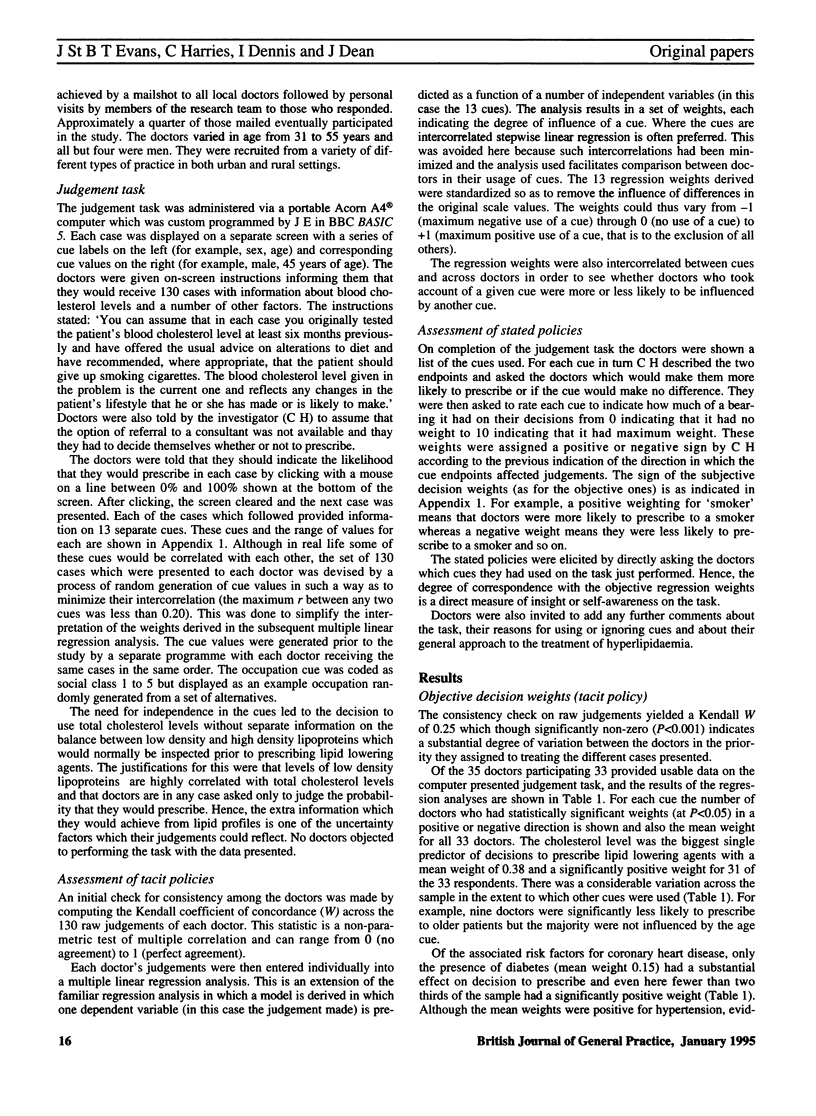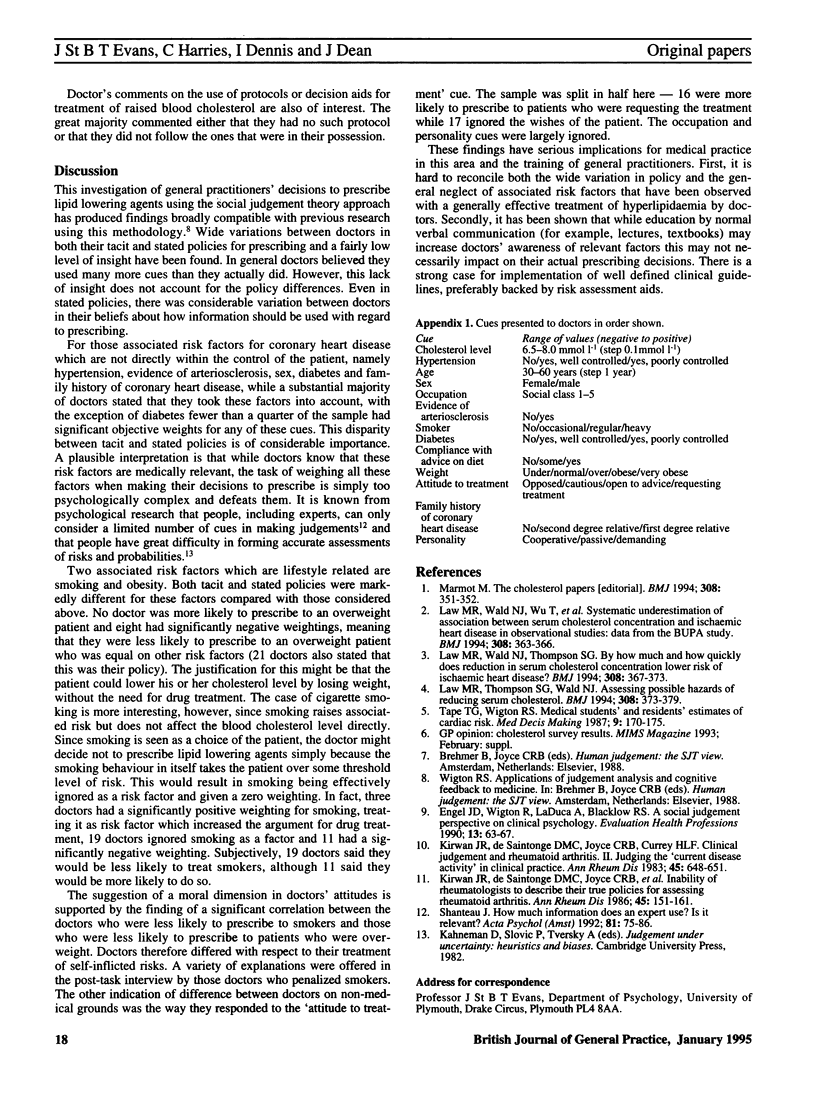Abstract
BACKGROUND. Research into general practitioners' prescribing behaviour with regard to lipid lowering agents has relied on survey methods which presume that doctors have insight into their prescribing behaviour and can describe it accurately. AIM. This study set out to measure the tacit policies used by general practitioners in prescribing lipid lowering agents and to compare these with their stated policies. METHOD. Effects of 13 separate cues on decisions to prescribe were examined. The cues included cholesterol levels and a number of associated risk factors for coronary heart disease. Doctors rated 130 imaginary cases presented by a computer. Thirty five general practitioners in the Plymouth area participated in the study. Their ages ranged from 31 to 55 years and all but four were men. The raw data in each case was a rating of the likelihood that the doctor would prescribe for the patient described. These were converted into statistical weightings by use of multiple linear regression. The pattern of (standardized) weights constituted the tacit policy for each doctor. Stated policies were measured in a subsequent interview by asking doctors to rate the influence of each cue. RESULTS. Both tacit and stated policies diverged widely between different doctors. Most doctors overestimated the number of cues that had actually influenced their decisions, and many believed that they had taken into account associated factors for coronary heart disease when they had not. On lifestyle related risks doctors were generally less likely to treat overweight people and most stated this as their policy. Most were also less likely to treat smokers but some had the opposite policy. Those less likely to treat smokers were also less likely to treat obese patients. There was also considerable variation in the extent to which the doctors took account of the attitude of the patient to receiving treatment. CONCLUSION. Doctors' policies are highly variable and particularly inconsistent in the treatment of smokers. Relevant risk factors may be ignored--even though they are understood--because the risk assessment involved is too psychologically complex a task to be performed intuitively. Decision aids and clear protocols are needed in this area.
Full text
PDF



Selected References
These references are in PubMed. This may not be the complete list of references from this article.
- Kirwan J. R., Chaput de Saintonge D. M., Joyce C. R., Currey H. L. Clinical judgment in rheumatoid arthritis. II. Judging 'current disease activity' in clinical practice. Ann Rheum Dis. 1983 Dec;42(6):648–651. doi: 10.1136/ard.42.6.648. [DOI] [PMC free article] [PubMed] [Google Scholar]
- Kirwan J. R., Chaput de Saintonge D. M., Joyce C. R., Holmes J., Currey H. L. Inability of rheumatologists to describe their true policies for assessing rheumatoid arthritis. Ann Rheum Dis. 1986 Feb;45(2):156–161. doi: 10.1136/ard.45.2.156. [DOI] [PMC free article] [PubMed] [Google Scholar]
- Law M. R., Thompson S. G., Wald N. J. Assessing possible hazards of reducing serum cholesterol. BMJ. 1994 Feb 5;308(6925):373–379. doi: 10.1136/bmj.308.6925.373. [DOI] [PMC free article] [PubMed] [Google Scholar]
- Law M. R., Wald N. J., Thompson S. G. By how much and how quickly does reduction in serum cholesterol concentration lower risk of ischaemic heart disease? BMJ. 1994 Feb 5;308(6925):367–372. doi: 10.1136/bmj.308.6925.367. [DOI] [PMC free article] [PubMed] [Google Scholar]
- Law M. R., Wald N. J., Wu T., Hackshaw A., Bailey A. Systematic underestimation of association between serum cholesterol concentration and ischaemic heart disease in observational studies: data from the BUPA study. BMJ. 1994 Feb 5;308(6925):363–366. doi: 10.1136/bmj.308.6925.363. [DOI] [PMC free article] [PubMed] [Google Scholar]
- Marmot M. The cholesterol papers. BMJ. 1994 Feb 5;308(6925):351–352. doi: 10.1136/bmj.308.6925.351. [DOI] [PMC free article] [PubMed] [Google Scholar]
- Tape T. G., Wigton R. S. Medical students' and residents' estimates of cardiac risk. Med Decis Making. 1989 Jul-Sep;9(3):170–175. doi: 10.1177/0272989X8900900304. [DOI] [PubMed] [Google Scholar]


